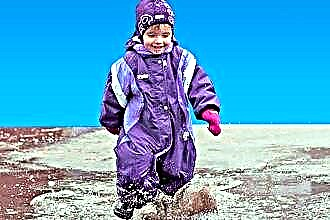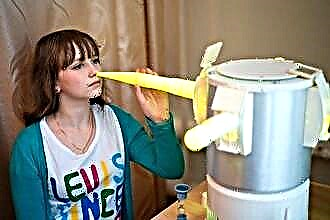Viral sinusitis is a common companion of acute respiratory viral infection. Almost always, this is bilateral non-suppurative inflammation of the paranasal sinuses. If you take an X-ray during an illness, in 90% of cases, it turns out that the mucous membrane is swollen, the sinuses and passages are clogged with secreted mucus, which stagnates.
Symptoms of the disease
Since the ailment passes against the background of ARVI, it is difficult to distinguish its specific signs. The same manifestations are noted as with acute respiratory infections:
 reduced sense of smell and sense of taste;
reduced sense of smell and sense of taste;- upper jaw teeth periodically hurt;
- fever;
- headache;
- there is a wet cough;
- a putrid smell comes from the mouth.
A separate diagnosis of "viral sinusitis" is not made, but the doctor must notify the patient of sinus inflammation and infection. Depending on its nature, the virus can cause bronchitis, rhinitis, tonsillitis, laryngitis, pharyngitis and other respiratory diseases.
Main reasons
It is easy to guess that the main cause of the disease is viruses, due to which adenovirus, reovirus, rhinovirus infections, influenza and parainfluenza develop. The paranasal sinuses of the upper jaw swell greatly when infected. Viruses cause inflammation of the upper layer of cells in the respiratory tract, which causes swelling of the mucous membrane. Irritation provokes the release of a large amount of secretion, and puffiness prevents it from leaving the sinuses. The accumulation of mucus in them causes inflammation. This is how sinusitis occurs.
The viral ailment proceeds without complications, does not go into an acute form and fades away along with the underlying disease. Complications can cause stagnation of mucus, which often occurs against the background of the anatomical features of the structure of the nasopharynx.
Sometimes the cause of sinusitis is a cyst or polyps in the nose, improper therapy. Therefore, you should always listen to the advice of a doctor and not self-medicate.
How to distinguish viral from bacterial sinusitis
 In addition to viral, there is also bacterial sinusitis. It proceeds more acutely, manifests itself in painful symptoms. A viral ailment, with improper treatment or its absence, leads to a bacterial variety, when pathogenic bacteria begin to actively develop in the inflamed sinuses of the nose.
In addition to viral, there is also bacterial sinusitis. It proceeds more acutely, manifests itself in painful symptoms. A viral ailment, with improper treatment or its absence, leads to a bacterial variety, when pathogenic bacteria begin to actively develop in the inflamed sinuses of the nose.
A clear sign of a change in the nature of sinusitis is discharge. They have an unpleasant odor, the tint of snot turns yellow or green.
If a viral disease does not cause fever, then with a bacterial disease, the body temperature can reach 40OC. At the same time, there is a heaviness in the sinuses, which seems to press on the face. It is this type of sinusitis that usually transforms into a chronic disease.
Possible forms of the disease
A viral illness can go through three stages:
 A lung, when the nose is stuffed up, the discharge is insignificant, and the general standing indicates a simple respiratory infection.
A lung, when the nose is stuffed up, the discharge is insignificant, and the general standing indicates a simple respiratory infection.- Average, when weakness, cough, severity of the affected sinus, general malaise are added to the signs described above.
- Severe, which flows into bacterial sinusitis. Headache, drowsiness and apathy appear.
In order not to bring the disease to the last stage, it is important to start active treatment at the first symptoms. At first, these may be folk remedies, but if there is no improvement and the disease progresses, be sure to consult a doctor who will prescribe an effective therapy.
Treatment of the disease
As already mentioned, this type of sinusitis does not require special therapy. In addition, not a single antibiotic acts on him. Usually, the disease goes away with ARVI. But if viral sinusitis is not treated, it becomes bacterial and threatens with severe complications. Therefore, always cure the disease completely until all symptoms disappear.
Medicines
Medication is usually required for moderate to severe sinusitis. The lung goes away after a few days on its own or when treated with folk remedies. But the moment of recovery can be brought closer by using some medicines. They will help to quickly relieve swelling, which helps to remove mucus. To do this, use:
 Saline solutions sold as sprays or drops. They help moisturize the nasopharynx, relieve congestion, and make mucus go away more intensively. These funds are harmless, so you can use them as much as you like until you recover completely. These are "Fluimarin", "Aqualor", "Aqua Maris", which are used 3-8 times a day, two doses per nostril. For children, the remedy is instilled in a few drops.
Saline solutions sold as sprays or drops. They help moisturize the nasopharynx, relieve congestion, and make mucus go away more intensively. These funds are harmless, so you can use them as much as you like until you recover completely. These are "Fluimarin", "Aqualor", "Aqua Maris", which are used 3-8 times a day, two doses per nostril. For children, the remedy is instilled in a few drops.- Painkillers, which are usually prescribed for the third stage of the disease. To relieve pain, use "Ibuprofen" or "Paracetamol", they are drunk in courses of several days. The dosage is selected only by the attending physician, based on the age of the patient and the nature of the course of the disease.
- Local vasoconstrictor drugs that come in the form of sprays or drops. The duration of their action depends on the main component. So, if it is oxymetazoline, then it will relieve swelling for 12 hours. This component is an integral part of such drugs as "Otrivin", "Dlyanos", "Xymelin", "Naftizin" and others. But they can be used no longer than three days, otherwise a secondary inflammatory process will develop.
Antibiotics are not used in the treatment of sinusitis of a viral nature, since they destroy only bacteria, not viruses. In addition, if used uncontrollably, bacteria will develop resistance to drugs. And when antibiotics are really needed, they may not work. Then coping with the infection will be difficult.
"Grandma's" means
There are many popular recipes that help to effectively deal with mild manifestations of sinusitis, which is of a viral nature. Among the most common are the following:
- A product based on sunflower oil, soda and honey. We mix the components in equal proportions. We take an ear stick and dip it in the mixture, insert it into the nostril. Without removing the stick, you need to lie on the other side for 15 minutes. Then we repeat the procedure on the other side. It is impossible to carry out the procedure on both nostrils at the same time.
- Alcoholic tincture of propolis 20%, which is mixed with vegetable oil of the same volume. The mixture is instilled into the nose up to four times a day.
 Cyclamen juice. Test the sensitive skin area before using it. Cyclamen is considered a strong allergen. If the samples have not caused a negative reaction, freshly squeezed juice is dripped a couple of drops into each nostril. This will provoke active mucus production, so prepare to blow your nose frequently. When using cyclamen juice, you cannot simultaneously use drugs that fight rhinitis. In this case, you can only aggravate the disease due to the fact that the discharge will stagnate in the sinuses.
Cyclamen juice. Test the sensitive skin area before using it. Cyclamen is considered a strong allergen. If the samples have not caused a negative reaction, freshly squeezed juice is dripped a couple of drops into each nostril. This will provoke active mucus production, so prepare to blow your nose frequently. When using cyclamen juice, you cannot simultaneously use drugs that fight rhinitis. In this case, you can only aggravate the disease due to the fact that the discharge will stagnate in the sinuses.- Kalanchoe juice. It is obtained from the fleshy and elastic leaves of the plant. The juice is squeezed out just before use. They have their nose buried up to four times a day. If a runny nose is treated in a child, it is better to dilute the Kalanchoe juice with honey one to one. The remedy provokes frequent sneezing and mucus production.
- Sea buckthorn oil is dripped into the nose twice a day, without diluting anything. It constricts blood vessels, restores mucous membranes. You can do inhalation with it by adding ten drops to a container of hot water. The procedure is carried out no more than a quarter of an hour. You also need to be careful with this remedy, as it can cause allergies.
- Horseradish root.The washed and peeled root vegetable is rubbed so as to fill a third of the glass. Juice squeezed from three lemons is added to it and mixed thoroughly. The resulting product is swallowed in the morning on a teaspoon on an empty stomach. They use it until the symptoms of the disease disappear.
- Thuja oil. Before using it, rinse your nose with a salt solution. The oil is dripped into each nostril in a couple of drops. The procedure is carried out three times a day.
- Bay leaf. The leaves are poured with water, brought to a boil, turned off and allowed to cool slightly. A napkin is dipped into this broth, which is then applied to the forehead and the bridge of the nose. Cover the top with a warm and dry towel. When the napkin is dry, repeat the procedure. It is best done before bed.
Saline solution
 Sea salt is rich not only in minerals, but also in natural antiseptics, therefore it is always used in the treatment of sinusitis. Rinsing your nasal passages with saline helps to get rid of viruses that accumulate in your nose and paranasal sinuses.
Sea salt is rich not only in minerals, but also in natural antiseptics, therefore it is always used in the treatment of sinusitis. Rinsing your nasal passages with saline helps to get rid of viruses that accumulate in your nose and paranasal sinuses.
To prepare the solution, take a teaspoon of salt in half a liter of warm water (for children - per liter). It is not recommended to use more salt, otherwise you can burn the mucous membrane. The water should not be too cold or hot. Optimum temperature - 40-42OC. Make sure that all grains are dissolved in water, and only then proceed with the procedures. Otherwise, solid particles can scratch the mucous membrane.
Add a couple of drops of iodine and half a teaspoon of baking soda to the saline solution. This agent is used to rinse the nose or use it for medical applications.
To do this, dissolve a tablespoon of salt in a glass of warm water. Take a linen napkin, soak it in the solution and apply it to the face for 15 minutes. It turns out a kind of inhalation, which helps to normalize the secretion of mucus, cleans the nasal passages and maxillary sinuses.
Other therapies
Physiotherapy can be used in the treatment of viral sinusitis. The most gentle procedure is to clean the sinuses with the YAMIK soft catheter. But before it starts, the nose is anesthetized. The catheter has two balloons: at the end and in the middle. When fully inserted into the nose, the middle balloon is in the nostril. After inflation of the balloons, the sinuses and nasal cavity are sealed.
 During the treatment of the nose through one of the working outlets of the catheter with the help of a syringe, the pressure inside the nose is changed. This procedure helps to separate and remove the inflamed mucosa. There is another syringe outlet on the catheter, through which antiseptics and drugs are injected.
During the treatment of the nose through one of the working outlets of the catheter with the help of a syringe, the pressure inside the nose is changed. This procedure helps to separate and remove the inflamed mucosa. There is another syringe outlet on the catheter, through which antiseptics and drugs are injected.
Modern medicine in the treatment of sinusitis uses balloon sinusoplasty. The procedure involves inserting a thin balloon catheter into the nostril where it inflates, widening the blocked sinus opening. With its help, you can remove mucous secretions that do not come out naturally and relieve pressure on the face.
Treatment of sinusitis of a viral nature takes about two weeks. If the therapy was chosen correctly, the symptoms gradually disappear. During illness, it is recommended to drink plenty of fluids, warm up inflamed sinuses, and rinse the nasal passages with saline solutions.
Using the above means, you will surely get rid of a disease that rarely develops into severe bacterial sinusitis. But if there is no improvement in the condition within two weeks, be sure to consult a doctor for advice and correction of treatment.

 reduced sense of smell and sense of taste;
reduced sense of smell and sense of taste; A lung, when the nose is stuffed up, the discharge is insignificant, and the general standing indicates a simple respiratory infection.
A lung, when the nose is stuffed up, the discharge is insignificant, and the general standing indicates a simple respiratory infection. Saline solutions sold as sprays or drops. They help moisturize the nasopharynx, relieve congestion, and make mucus go away more intensively. These funds are harmless, so you can use them as much as you like until you recover completely. These are "Fluimarin", "Aqualor", "Aqua Maris", which are used 3-8 times a day, two doses per nostril. For children, the remedy is instilled in a few drops.
Saline solutions sold as sprays or drops. They help moisturize the nasopharynx, relieve congestion, and make mucus go away more intensively. These funds are harmless, so you can use them as much as you like until you recover completely. These are "Fluimarin", "Aqualor", "Aqua Maris", which are used 3-8 times a day, two doses per nostril. For children, the remedy is instilled in a few drops. Cyclamen juice. Test the sensitive skin area before using it. Cyclamen is considered a strong allergen. If the samples have not caused a negative reaction, freshly squeezed juice is dripped a couple of drops into each nostril. This will provoke active mucus production, so prepare to blow your nose frequently. When using cyclamen juice, you cannot simultaneously use drugs that fight rhinitis. In this case, you can only aggravate the disease due to the fact that the discharge will stagnate in the sinuses.
Cyclamen juice. Test the sensitive skin area before using it. Cyclamen is considered a strong allergen. If the samples have not caused a negative reaction, freshly squeezed juice is dripped a couple of drops into each nostril. This will provoke active mucus production, so prepare to blow your nose frequently. When using cyclamen juice, you cannot simultaneously use drugs that fight rhinitis. In this case, you can only aggravate the disease due to the fact that the discharge will stagnate in the sinuses.

